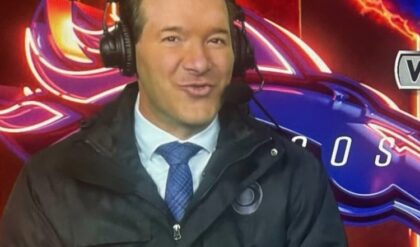Elon Musk finally announced the brand-new Tesla Cybercab, a robotaxi he’s been promising for several years as he works to push the world toward driverless vehicles and a more high-tech future

Tech mogul Elon Musk announced two new companions to his controversial Cybertrucks, as part of his vision for a high-tech future featuringrobots and self-driving vehicles.
At an event in California earlier in the week, Musk, who owns Tesla, SpaceX, and the social media platform X (formerly Twitter), introduced new robotaxis and the Robovan, which are slated to be self-driving versions of taxis and vans, respectively.
The new vehicles will not contain steering wheels, and their designs are metallic, shiny, and sci-fi-themed, modeled after classic dystopian sci-fi movies like Blade Runner, which Musk referenced during his speech. He said he aimed to make vehicles like those seen in the movie, but with a more optimistic tone.

Musk presented the idea during a speech at Warner Bros. studio (
Image:
@Elonmusk/X)
During the speech on Thursday, the Tesla CEO shared his vision of a “fun, exciting future” featuring an “age of abundance” that he said his new vehicle lines could help the world reach. He wants to see self-driving cars, parking lots turned into parks and robots walking among people, all things he said could be accomplished within just a few years.
But Musk is famous for promising short-term deadlines for what end up becoming long-term projects. He previously said about five years ago that robotaxis would be rolled out within the year, but then wasn’t able to fulfill that promise. He even admitted during his presentation that he tends to be “a little optimistic with time frames.”
The event was livestreamed on X to millions of viewers and began 53 minutes late, but the crowd in person at the event was nevertheless buzzing, CNN reported, as Musk took the stage. They all wanted to ride the 50 self-driving vehicles cruising around the lot outside Warner Bros. studio that evening and continued to cheer on the tech mogul as he made his 20-minute presentation.

Musk compared the experience of riding in a Cybercab to that of a “lounge” on the road (
Image:
Tesla)
The new vehicles would be tests of Tesla’s long-offered Full Self-Driving (FSD) features, which currently cost $8,000 per new vehicle if that option is wanted by consumers. Nevertheless, drivers in FSD cars have to be in the driver’s seat, ready to take control of the vehicle should it stray into dangerous territory on the road.
His new FSD vehicles won’t allow human intervention at all, he said, and he’s hoping that states like California and Texas allow them on roadways by next year. The overall safety of FSD is in question, however, after several independent companies tested the feature on self-driving Teslas.
On average, those testers revealed that drivers needed to take control of the vehicles every 13 miles — ultimately rendering them unsafe overall despite Musk’s insistence that the feature is, in fact, safe and that it’s safer than the average human driver.

The Robovan, a much larger version of the Cybercab, was also introduced, but a timeline for its production wasn’t given
Musk also announced the Cybercab, which he said should be in production by 2026, which is a self-driving taxi that doesn’t feature a steering wheel, accelerator or brake pedals that’s designed to carry passengers without a driver present. He said of the Cybercabs, “It’ll be like sitting in a comfortable little lounge. Yeah, it’s going to be awesome.”
The Robovan, by comparison, could carry up to 20 passengers or even goods, but he didn’t give a timeframe for that vehicle, which would function much like the Robocab. Both would contain no plug and would be charged by driving over charging plates.
If successful, the robotaxis are slated to compete with Uber, Lyft, other taxi services and even with other self-driving taxi services already on the streets, such as Google’s Waymo. Tech journalist Kara Swisher said Tesla seems to be behind its competitors, which she said could prove detrimental to Musk and his ambitions.

